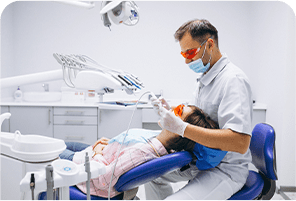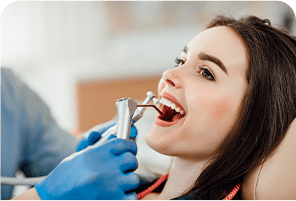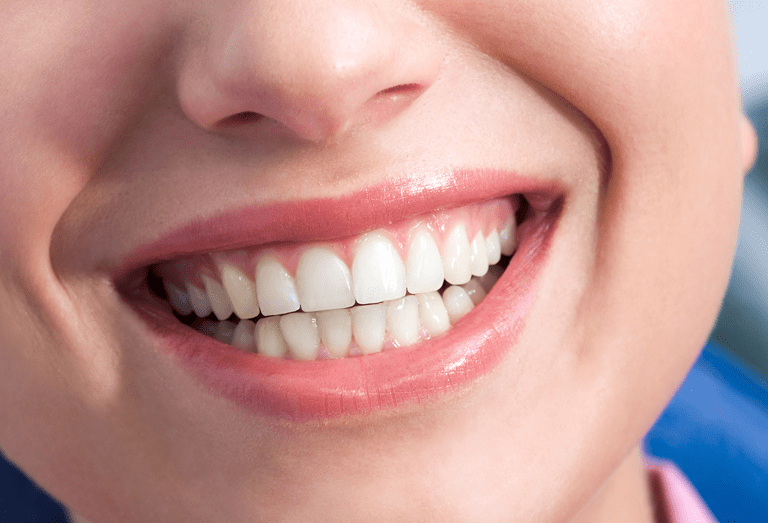Guided Tissue Regeneration Dental
Guided Tissue Regeneration Dental
Information for Dentists
One of the most important advances in dentistry is the ability to grow back tissues damaged by periodontal disease. One way to do this is to help the tissues grow back together.A biocompatible membrane is placed over the bone defect during surgery to separate and protect it.
In this way, the migration of periodontal epithelial tissues into the bone defect is anticipated, so the bone and tissues have time to heal. Next, we will recall the properties that the membranes used in guided tissue regeneration dental must have, in which situations this technique should be chosen and how to control the evolution of the treatment.
Characteristics of guided tissue regeneration membranes
- Compatible with biological tissue.
- Painless.
- Free of microorganisms.
- Resistant to infection, if it exists.
- Wide enough to create a space.
- Easy to manipulate.
- plosives.
- Slow reabsorption.
Also, it’s important to remember that the membranes can dissolve. The resorbable ones do not need to be removed thanks to being made of synthetic polymers or natural materials such as collagen or calcium sulfate. The non-resorbable ones, on the other hand, must be removed with surgery after a month or a month and a half from the guided tissue regeneration intervention, causing additional trauma.
Guided tissue regeneration can sometimes be used instead of bone grafting because it is less invasive. After an exam and X-rays of your teeth, our periodontist can decide how to treat you.
When to perform a guided tissue regeneration?
- Gingival recessions.
- Periapical abscesses with bone loss.
- Maxillary sinus perforations.
- Type II furcation defects.
- infrabony defects.
- Increase the bone ridge to make implants or stabilize them.
Benefits of Guided Tissue Regeneration
If you have lost a jawbone because of gum disease or lost a tooth, you will probably need bone grafting before dental implants can be used to replace missing teeth. Our dentist may utilize a method known as "directed tissue regeneration" to help ensure the effectiveness of this procedure (and occasionally even as a replacement for it). This method aids in the regeneration of bones and tissues that your body may have lost as a result of gum disease.

1. Stimulates Bone Regeneration
Tissue can regrow in a regulated manner when a particular barrier is placed between the bone and the soft tissues surrounding a tooth. This membrane serves as a barrier to prevent the faster-healing gums from impeding or stopping the bone's ability to repair and strengthen.

2.Assists in natural teeth preservation
Guided tissue regeneration can stop bone loss from gum disease from making natural teeth fall out. By rebuilding the damaged bone and tissues around the tooth, these new structures will give the tooth the long-term safety and stability it needs to stay healthy.

3. Improves natural aesthetics.
Gum diseases harm your teeth and smile, which leads to soft tissue and bone loss surrounding a tooth. Guided tissue regeneration helps rebuild these structures. This reduces unsightly periodontal pockets and improves the look of the teeth and smile as a whole.

4. Makes the jaw more implant-ready.
Guided tissue regeneration helps fix the broken bone and makes a stable base for dental implants. It can be used alone or in combination with bone grafting. Dense bone ensures that the implant posts are anchored in strong bone, which supports new teeth for a long time.
How to control the evolution of periodontal regeneration?
Once the guided tissue regeneration resorbable has been carried out, whether the membrane is absorbable or not, the evolution of the intervention must be closely monitored. Its measurement is standardized, with a pressure of 20g so that the patient does not feel pain, and detailed results are obtained. Calibration is done automatically. Its tip is disposable and sterile. In addition, the probe is much more ergonomic than conventional ones. In short, it is the best periodontal probe for dentists and patients. Get in touch with Virginia dental care to know more about the Pa-On investigation or see it in action.



